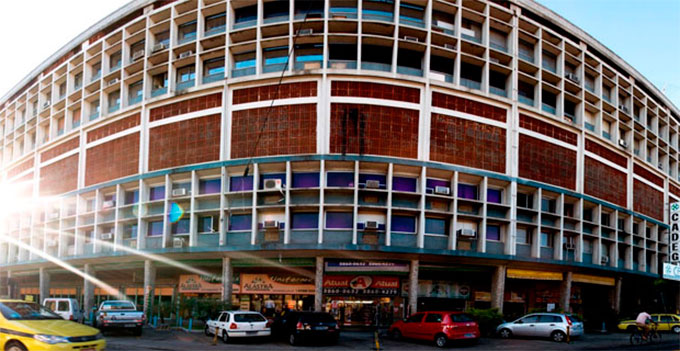CADEG is a gigantic supply center, with 100,000 m² of built area and more than 700 companies installed. His proposal is in the middle ground between Cobal and CEASA. In addition to selling wholesale products, CADEG offers good entertainment options, with bars and restaurants that have attracted more and more visitors.
The Centro de Abastecimento do Estado da Guanabara ( CADEG ) has a past that is directly associated with the memories of the innovations of the city of Rio de Janeiro. During the administration of Mayor Pereira Passos, the city of Rio de Janeiro developed a lot. All this growth led to the need for a large shopping center. It was then that, in 1907, the Praça XV Municipal Market appeared.
CADEG Rio de Janeiro
From the beginning, the Municipal Market was managed by Companhia do Mercado. Together with the merchants, the Company, which had a 50-year contract with the city hall, in the early 1950s began to demand improvements in working conditions and, not getting a good return, they began to try to disconnect from the municipal agreement. To make the tension worse, the merchants learned that the Praça XV Municipal Market could be demolished for the passage of the Perimetral”, says historian Maurício Santos.
To solve this problem, an assembly, which had as leaders: Antônio Afonso Nunes Martins, David Moreira da Silva, José Antônio Cristóvão and Carlos Vieira da Silva, decided that the merchants should look for another place to rebuild the large market. This new location, free of contracts and rents, took some work to find, but it was. The current address is CADEG’s: Rua Capitão Félix n° 110. The space, with about 100,000 m², used to belong to an old cigarette factory.

With the land purchased, construction began. The architectural project was by Vigor Artese and Moacyr Gomes da Costa. The work, at the time, was considered the third largest in Brazil in reinforced concrete, second only to Maracanã and the Furnas Hydroelectric Power Plant. The works began in 1957 and ended in 1962, in the period of the State of Guanabara, which at the time was ruled by Carlos Lacerda. Lacerda collaborated with the new initiative and directed the supply to Rio de Janeiro there.
When you hear from someone that CADEG has everything, believe it. A unique space in the city, open 24 hours a day, the market is full of news: the latest is the news that it is on its way to becoming an official heritage site in Rio de Janeiro. The listing process takes place at Instituto Estadual do Patrimônio Cultural ( Inepac ) and It might take a while. Apart from that, CADEG (and not CADEG, since the name comes from the center, and not from the central) is going through a delicate moment, of transition. The diversity in its corridors and the “modernization” proposals, such as 100% paid parking, already in operation, are reasons for clashes inside.
Since the big supermarkets stopped buying at CADEG, around 2007, the old stronghold of Portuguese and Italians has been changing. Retail overtook wholesale, and many people attracted by the movement and low rents began to see an opportunity for new business there. The estimate is that the place moves more than R$ 30 million per month.
CADEG Stores
Today, CADEG, in addition to offering a vast food and flower market, also allows the purchase of shoes and clothing, as well as services such as newsstands, banks, bars, key chains, pharmacies, pet shops, and others, there are several stores that offer every type of segment to a huge audience. The CADEG is also known only as Guanabara, after all it is located where the State of Guanabara and loads its name.
Guanabara Hours of Operation
Flower Market Shed: Mon to Sat from 3am to 12pm
Secretary: Mon to Sat from 00:00 to 19:00
Administration: Mon to Fri from 8am to 5pm
Stores: Consult the desired store.
Before visiting CADEG, CONFIRM THE OPENING HOURS of the store you wish to visit, as the commercial units have different hours according to their line of business.
